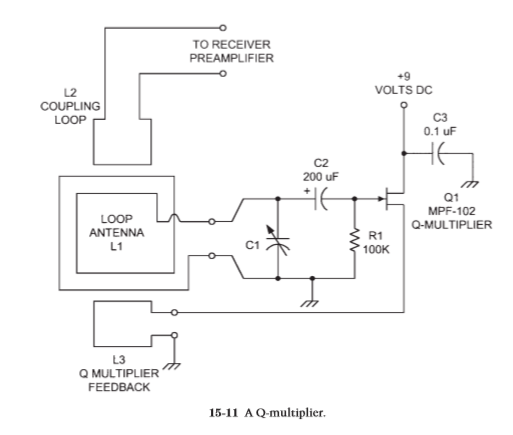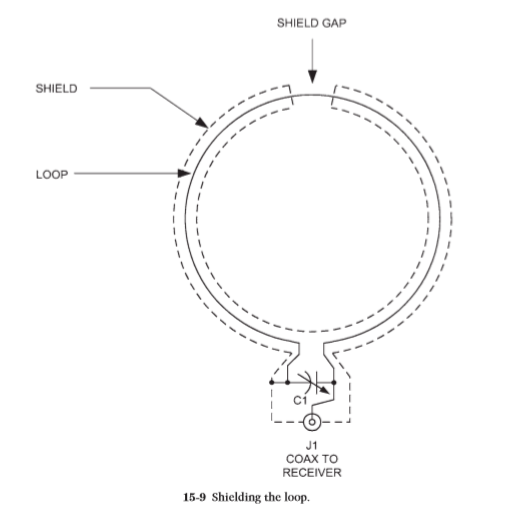Loop performance is greatly enhanced by tuning the inductance of the loop to the desired frequency. The bandwidth of the loop is reduced, which reduces front-end overload. Tuning also increases the signal level available to the receiver by a factor of 20 to 100 times. Although tuning can be a bother if the loop is installed remotely from the receiver, the benefits are well worth it in most cases. There are several different schemes available for tuning, and these are detailed in Fig. 15-6. The parallel tuning scheme, which is by far the most popular, is shown in Fig. 15-6A. In this type of circuit, the capacitor (C1) is connected in parallel with the inductor, which in this case is the loop. Parallel resonant circuits have a very high impedance to signals on their resonant frequency and a very low impedance to other frequencies.
As a result, the voltage level of resonant signals is very much larger than the voltage level of off-frequency signals. The series resonant scheme is shown in Fig. 15-6B. In this circuit, the loop is connected in series with the capacitor. A property of series resonant circuits is that they offer a high impedance to all frequencies except the resonant frequency (exactly the opposite of the case of parallel resonant circuits).
As a result, current from the signal will pass through the series resonant circuit at the resonant frequency, but off-frequency signals are blocked by the high impedance. There is a wide margin for error in the inductance of loop antennas, and even the precise-looking equations to determine the required values of capacitance and inductance for proper tuning are actually only estimations. The exact geometry of the loop “as built” determines the actual inductance in each particular case. As a result, it is often the case that the tuning provided by the capacitor is not as exact as desired, so some form of compensation is needed. In some cases, the capacitance required for resonance is not easily available in a standard variable capacitor, and some means must be provided for changing the capacitance.
Figure 15-6C shows how this is done. The main tuning capacitor can be connected in either series or parallel with other capacitors to change the value. If the capacitors are connected in parallel, then the total capacitance is increased (all capacitances are added together). If the extra capacitor is connected in series, however, then the total capacitance is reduced. The extra capacitors can be switched in and out of a circuit to change frequency bands. Tuning of a remote loop can be a bother if it is done by hand, so some means must be found to do it from the receiver location (unless you enjoy climbing into the attic or onto the roof). Traditional means of tuning called for using a low-rpm dc motor, or stepper motor, to turn the tuning capacitor. A very popular combination was the little 1- to 12-rpm motors used to drive rotating displays in retail store show

windows. But this approach is not really needed today. We can use varactor voltagevariable capacitance diodes to tune the circuit. A varactor works because the junction capacitance of the diode is a function of the applied reverse-bias voltage. A high voltage (such as 30 V) drops the capacitance, whereas a low voltage increases it. Varactors are available with maximum capacitances of 22, 33, 60, 100, and 400 pF. The latter are of most interest to us because they have the same range as the tuning capacitors normally used with loops. Figure 15-7 shows how a remote tuning scheme can work with loop antennas. The tuning capacitor is a combination of a varactor diode and two optional capacitors: a fixed capacitor (C1) and a trimmer (C2). The dc tuning voltage (V t) is provided from the receiver end from a fixed dc power supply (V
). A potentiometer (R1) is used to set the voltage to the varactor, hence also to tune the loop. A dc blocking capacitor (C3) keeps the dc tuning voltage from being shorted out by the receiver input circuitry.








